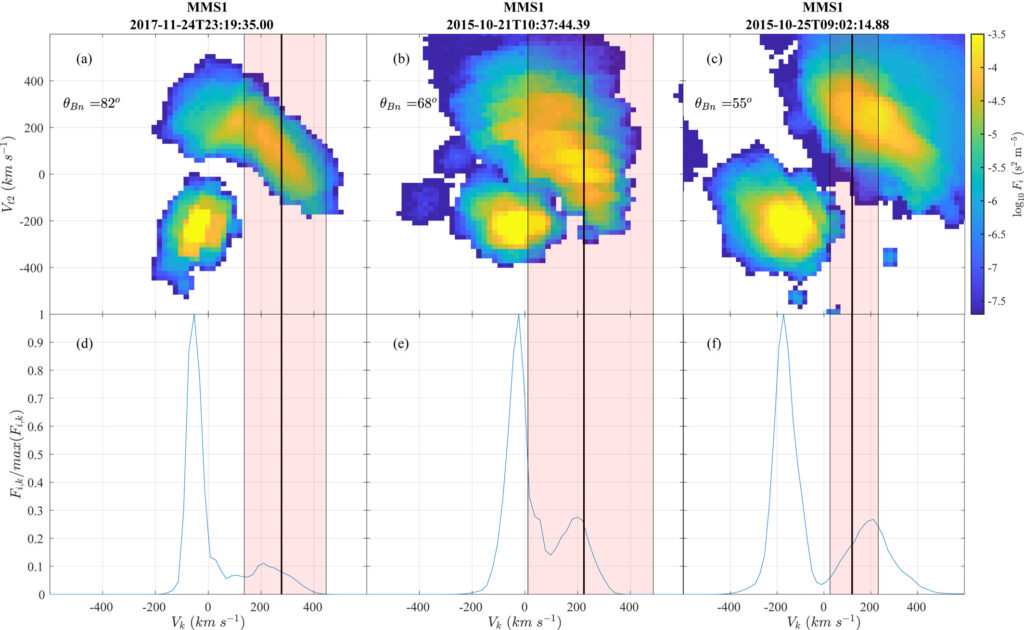Whistler waves are thought to play an essential role in the dynamics of collisionless shocks. We use the magnetospheric multiscale spacecraft to study whistler waves around the lower hybrid frequency, upstream of 11 quasi-perpendicular supercritical shocks. We apply the 4-spacecraft timing method to unambiguously determine the wave vector k of whistler waves. We find that the waves are oblique to the background magnetic field with a wave-normal angle between 20° and 42°, and a wavelength of around 100 km, which is close to the ion inertial length. We also find that k is predominantly in the same plane as the magnetic field and the normal to the shock. By combining this precise knowledge of k with high-resolution measurements of the 3D ion velocity distribution, we show that a reflected ion beam is in resonance with the waves, opening up the possibility for wave-particle interaction between the reflected ions and the observed whistlers. The linear stability analysis of a system mimicking the observed distribution suggests that such a system can produce the observed waves.

 plane (top row) and 1D velocity distribution functions (VDFs) reduced in the k direction (bottom row) for three different events with θBn = 82° (a, d), 68° (b, e), and 55° (c, f). The black line shows the wave phase speed and the pink-shaded area shows its 2σ interval. The times indicate the center of the 150 ms acquisition interval of the ions VDFs.
plane (top row) and 1D velocity distribution functions (VDFs) reduced in the k direction (bottom row) for three different events with θBn = 82° (a, d), 68° (b, e), and 55° (c, f). The black line shows the wave phase speed and the pink-shaded area shows its 2σ interval. The times indicate the center of the 150 ms acquisition interval of the ions VDFs.Full Article:
Lalti, A. (SHARP), Khotyaintsev, Y. V. (SHARP), Graham, D. B. (SHARP), Vaivads, A., Steinvall, K. and Russell, C. T. (SHARP) (2022). Whistler waves in the foot of quasi-perpendicular supercritical shocks. Journal of Geophysical Research: Space Physics, 127, doi: 10.1029/2021JA029969
License: CC BY 4.0





